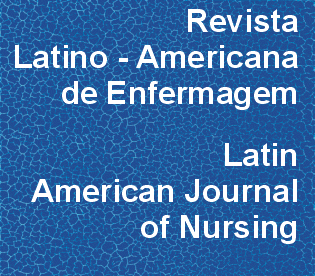Prospective, randomized and controlled trial on the dwell time of peripheral intravenous catheters in children, according to three dressing regimens
DOI:
https://doi.org/10.1590/S0104-11692005000300002Keywords:
pediatric nursing, catheterization, peripheral, infusions, intravenousAbstract
This prospective, randomized and controlled study verified the influence of three dressing regimens on the dwell time of peripheral intravenous catheters (PIC) in children. The study groups were composed of dressings with sterile gauze (EG 1), with sterile transparent film (EG 2) and with hypoallergenic adhesive tape (CG). Variables were selected to control for variables related to children, professionals and intravenous therapy characteristics. The 150 PIC that composed the sample were inserted in 68 children, predominantly of preschool age, male, with brown skin color, eutrophic and with gastrointestinal system diseases. The majority of the PIC was installed by nursing auxiliaries in veins of the dorsal arch of the hand. The type of dressing exerted a significant influence (p = 0.022) on the average dwell time of the studied PIC: EG 1 (46.12 hours), EG 2 (29.53 hours) and CG (38.18 hours), concluding that the dressing with sterile gauze maintained the catheter inserted for a longer time.Downloads
Download data is not yet available.
Downloads
Published
2005-06-01
Issue
Section
Original Articles
License
RLAE’s authorship concept is based on the substantial contribution by each of the individuals listed as authors, mainly in terms of conceiving and planning the research project, collecting or analyzing and interpreting data, writing and critical review. Indication of authors’ names under the article title is limited to six. If more, authors are listed on the online submission form under Acknowledgements. The possibility of including more than six authors will only be examined on multicenter studies, considering the explanations presented by the authors.Including names of authors whose contribution does not fit into the above criteria cannot be justified. Those names can be included in the Acknowledgements section.
Authors are fully responsible for the concepts disseminated in their manuscripts, which do not necessarily reflect the editors’ and editorial board’s opinion.
How to Cite
Machado, A. F., Pedreira, M. L. G., & Chaud, M. N. (2005). Prospective, randomized and controlled trial on the dwell time of peripheral intravenous catheters in children, according to three dressing regimens. Revista Latino-Americana De Enfermagem, 13(3), 291-298. https://doi.org/10.1590/S0104-11692005000300002



